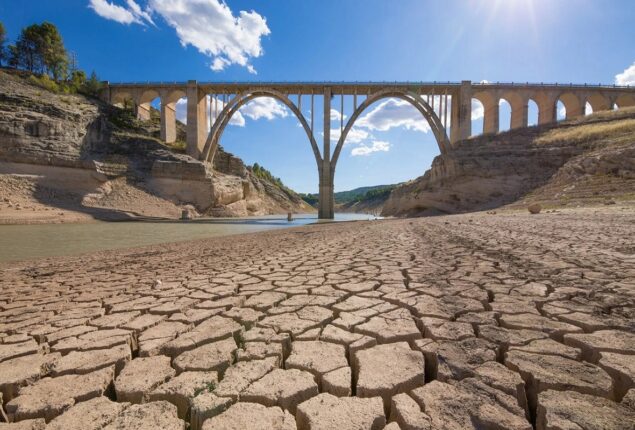France suffers from extreme drought
French government formed committee to deal with the record drought. There are...

Half of European Union countries suffering from drought
According to the European Commission, about half of European Union territory is now under a drought warning or more severe “alert” status, impeding agriculture, energy production, and water supply.
A “wide and persistent” lack of rain, coupled with heatwaves, has resulted in an alarmingly lengthy list of nations where drought is worsening, ranging from France in the west to Romania in the east, to western Germany and southern Greece.
According to new statistics from the European Drought Observatory (EDO), 45 percent of the EU’s territory was under “warning” conditions, the second of three drought classifications, in the ten days leading up to July 20.
Meanwhile, 15% of land has shifted into the most severe “alert” status, which means that not only is land drying up following a lack of rain, but plants and crops are also suffering.
The findings reflect little improvement from the preceding 10-day period, when 46 percent of land was classified as “warning” with dried out soil and 13 percent was classified as “alert.”
EDO warned in July that more dry weather projections for numerous nations in August and September”add concerns to the already very critical situation and, if confirmed, will exacerbate drought severity and the impacts on agriculture, energy and water supply”,
The worst drought on record in France has left parched communities without clean drinking water, producers warning of a milk scarcity this winter, and grain harvests on track to be 18.5 percent lower than last year.
The office of Prime Minister Elisabeth Borne established a crisis squad on Friday as the nation prepared for its fourth heatwave of the summer.
According to the EDO, “widespread stress on vegetation” has impacted the Italian lowlands, most of France, middle Germany, eastern Hungary, Portugal, and northern Spain, just as Europeans are grappling with increasing food costs as a consequence of the Ukraine conflict.
Farmers in Tuscany, Italy’s famous wine and olive oil region, are struggling to save as much of this year’s harvest as possible from the ravages of drought and scorching.
According to Professor David Hill, former vice chair of Natural England, intensive agricultural techniques have exacerbated droughts by making the soil less able to absorb water and hence more quickly dry up or be carried away.
“”Where you have large scale agricultural intensification, you end up with simple ecosystems that cannot withstand shock,” he said to Sky News.
“Massive farms are far less resilient to environmental change than a mosaic of different types.”
Energy output has dropped.
Russia’s newest invasion of its neighbour, which disrupted European gas supplies, led energy prices skyrocketing and forced nations to hunt for other energy sources.
However, low river levels and rising water temperatures have hampered energy generation in several locations.
Water scarcity curtailed Italy’s hydropower output, with energy potential contained in water reservoirs remaining around half of what it had been in recent years. Water levels in hydroelectric reservoirs are falling in nine nations, including Serbia, Montenegro, and Norway.
EDF, the French nuclear operator, limited electricity production at a facility in southern France this week owing to high river temperatures on the Garonne, with half of its 56 reactors already down due to maintenance or corrosion issues.
Parched Spain presently has “extremely favourable” wildfire conditions, while the risk of forest fires is high-to-extreme over much of Portugal.
Drought in the Mediterranean is becoming more severe and probable as a result of climate change, yet it is not to blame for all droughts.
Drought has several causes, but climate change influences it in two ways. It focuses rainfall into shorter, more powerful bursts, making retention more difficult.
Heatwaves, which are “unilaterally” connected to global warming, also cause increasing demand as people attempt to cool off.
The Daily Climate Show airs Monday through Friday at 3.30pm, and The Climate Show with Tom Heap airs Saturday and Sunday at 3.30pm and 7.30pm.
Everything is available on Sky News, the Sky News website and app, YouTube, and Twitter.
The programme analyses how global warming is altering our environment and focuses on potential solutions to the situation.
Catch all the World News, Breaking News Event and Latest News Updates on The BOL News
Download The BOL News App to get the Daily News Update & Follow us on Google News.